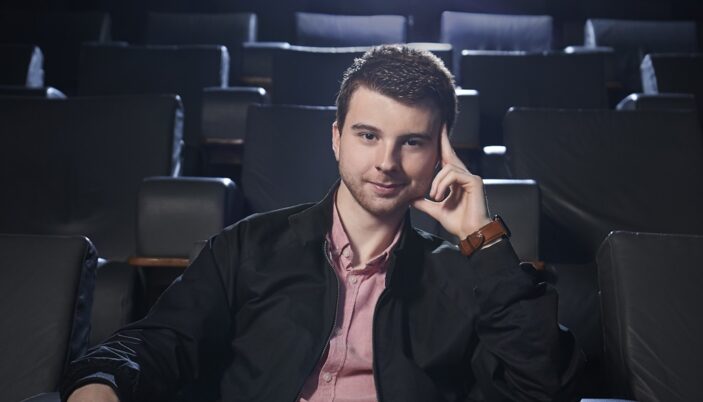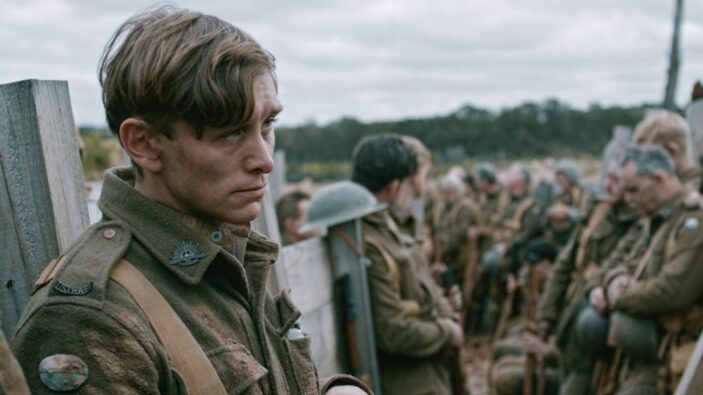
Based on real life war diaries, Before Dawn is an epic retelling of one of Australia’s biggest victories during WWI. Jim Collins, a young man from the outback, leaves his family-run sheep station to join the ANZAC and fight on the western front with hopes of making a difference. Soon, the realities of the muddy, ruthless, and entirely unforgiving war takes its toll on Jim. As the men in the battalion are whittled away and hope becomes a distant memory, a final chance at redemption at the Battle of the Hindenburg Line, one of Australia’s greatest WW1 military victories. Jim must risk death or forever carry the burden of leaving yet another man behind.
As the film arrives in Australian theatres, Peter Gray spoke with Before Dawn‘s writer and director, Jordon Prince-Wright, about telling such an important story and balancing historical accuracy with entertainment value.
I understand for this film you were inspired by WWI diaries you found in high school? Was this always a subject you were interested in?
For me, yes. We went to the Art Museum of Western Australia, (I) read some diaries, and then reached out to other museums and read more diaries about the same event or that were within the same battalion. It was actually when I read the diaries and started talking to people about it that every person, or the majority of people, would (only mention) Gallipoli. There’s three years after Gallipoli. Yes, Gallipoli is the bloodiest battle, etc, but I remember one woman saying “Oh, did the Anzacs continue fighting after Gallipoli?” I knew there needed to be awareness. I knew I had to tell this story.
I was, like, 15 at the time, so I knew I couldn’t tell it then, but it had to be told, so I made short films and a feature film with the unconventional ways of funding – sponsorships, etc – and when I had a good team together, I believed that now was the right time. With Before Dawn, we were told that making a Western in Australia was impossible. But if we were going to do one movie that’s going to be impossible, let’s give that a crack. It wasn’t the scale of it that scared me the most. It was actually that this Anzac story had so many intricate parts. So many intricate characters. It was the small things that scared me the most. (But) I’m quite excited we’ve come out at the end of it. We’ve had people in tears, happy tears, at the end of (screenings), so as long as we’ve done the Anzacs proud then I’ll be happy.
Do you find there’s a challenge in portraying historical accuracy? Apart from the diaries themselves, are you talking to anyone about specifics? Are you making sure this is as authentic as possible? Obviously you want to balance that with entertainment, so to speak.
It was the world building, and making that world authentic. It’s very hard to build sets to scale, which is what we did. That was pretty much 80% of the job done. And the rest of it was going, “Okay, now we need to tell the story as close to the diaries as possible.” Obviously there’s legal reasons and what not, so you can’t do everything 100% accurately, but I found that most of the battle was won because we had actual pyrotechnics (on set) going off. The costume department were so close on the details, right down to the continuity, and the actors hated it in the first week, because everything was so realistic. We had actual costumes from museums, and they were the itchy kind…these weren’t made for cinema. It looked the part but didn’t feel nice. It killed the actors. We filmed in the wettest winter on record. We all went through hell and back, but nowhere near as close as to what the Anzacs went through. At the end of the day we got to go home, have a shower, go to bed…we got to actually sit back on the weekends, occasionally. The first week it was hard (for the actors), but we just had to remember the significance of the story we were telling.
In that research, was there a key battle or any personal note that served as particular inspiration for anything we see in the film?
Without spoiling too much, we do have a bit of narration occasionally that drops in. It’s like you’re reading the diary. What I found with the diaries, and what blew me away, is that you would be reading and they’d be making a joke, (saying) something funny, mentioning this mate, and then he’d be shot and he would die. It’s like, “Hang on. I’ve been reading about him for the last three pages, and now he’s been shot?” In a matter of 4 or 5 words, you’d read about a friend being shot, and then in the next sentence it would be about what they had for dinner.
It’s funny, when I speak to my partner, I’m the type to use humour to cover stuff up. When everything starts getting serious, I want to use humour because I just don’t want to deal. And I saw that in the diary. I remember sitting with the actors and talking about if they can find any moment to throw in some humour. Tim Franklin, he was the king of improv on set. Some of the humour he came out with wasn’t in the script. It was just outlined. There’s only so much you can get out of the diary, so you have to add yourself. And I just had to harness (the cast’s) energy on screen.

There’s an immersion to the film. Were there any visual or audio elements that you purposely added to bring that immersiveness out further?
The sound design was always one of the big things talked about. We wanted to have music in the background and that extra sound design pushing you in throughout the entire film until a particular moment. It’s only at that particular moment when things are quiet that you’re like, “Oh, my ears.” Even during the quieter moments there still needs to be gunshots going off, because something was always happening. A lot of the feedback we got from the various test screenings was that people forgot about the sounds halfway through. And that’s what would’ve happened with the Anzacs. You know, a bomb would go off and it’s like, “Yeah, whatever.” I even found that too, as a director. I remember doing a sound design sitting, and I said to Brad (Habib, Sound Suervisor) and Collin (Graham, ADR Recordist) “We don’t have any noise here.” We watched the scene and there was noise all the way through. My brain had just switched it off. I had just gotten used to it.
Even that sort of level of immersiveness was awesome, because that’s what people were walking away with. I wanted them to experience not just the mud and the sandbags, but the look and the feel, and the humour. I want people to laugh, and then two minutes later be bawling their eyes out. I feel really privileged and humbled to tell this story. To take people on this journey. This emotional roller coaster.
How do you think this film contributes to our understanding of WWI? Obviously you want to show that there was more than just Gallipoli. That the soldiers kept fighting.
Yeah, and the hardest thing with it is it’s set over three years. We have the characters that are coming in and out of (the story), like Gallipoli’s happened, and we start this story with Jim (Levi Miller’s character) leaving the station being called out to war, because it’s the end of Gallipoli and so many signed up because of the campaigns. That continued for three years. I needed to tell (that) story. We have three years to tell, but we have to do it in an hour and 40 minutes, so it can be very hard. We have to focus on intricate stories and make sure there’s conflict, but, at the end of the day, it’s entertainment.
One piece of great feedback we have received though, and maybe it’s a director trait of mine, they seem to notice more on their second viewing. I think audiences don’t actually see the (title cards of) 1916, 1917, 1918 come up on screen, so they watch it a second time and they notice more. What they notice is this taking place over three years. As long as people walk away from this with a new awareness of the sacrifice of the Anzacs, and people can be proud of what they did, then I think I’ve done my job.
Before Dawn is now screening in Australian theatres.
